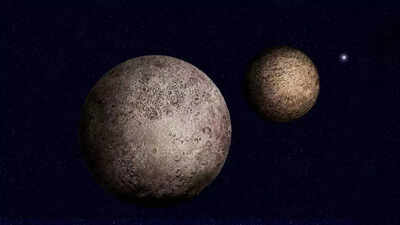science
Pluto's Moon Charon Formation Theory
March 04, 2025

A new formation theory for Pluto's moon Charon suggests that the two bodies may have formed in a "kiss-and-capture" process, similar to the formation of the Earth and its moon. This theory proposes that a massive object collided with Pluto, resulting in the formation of Charon. The collision was not a typical "hit-and-run" or "graze and merge" scenario, but rather a unique event where the two bodies stuck together without merging.
The "kiss-and-capture" theory could explain why Pluto appears to have an active geology, despite being far from the sun. The theory also suggests that Pluto may have an ocean of water beneath its icy surface, which has significant implications for the kinds of worlds that may exist in the Kuiper Belt. The Kuiper Belt is a ring of icy objects on the edge of the solar system, and eight of the 10 largest objects in the belt are similar to Pluto and Charon.
The discovery of Pluto's geologically active surface was made by NASA's New Horizons spacecraft in 2017. Since then, further research has revealed that other icy dwarf planets, such as Eris and Makemake, may also be geologically active. The James Webb Space Telescope has detected methane on the surfaces of these planets, suggesting hot geochemistry in their rocky cores. These findings have significant implications for our understanding of the Kuiper Belt and the potential for water to exist on other celestial bodies.
Source